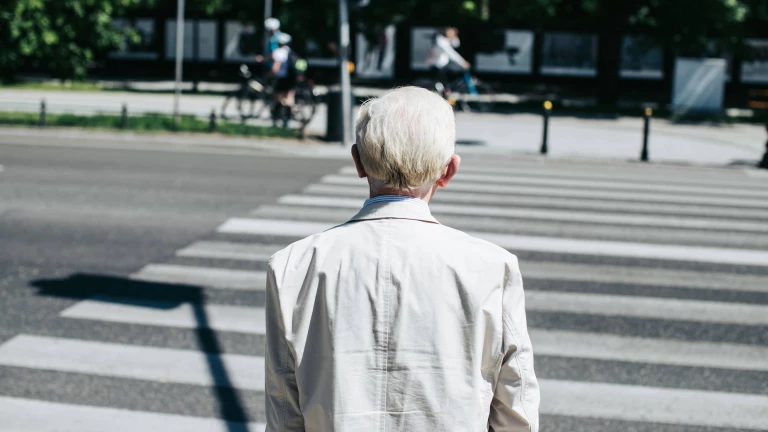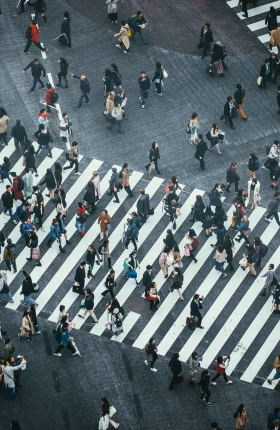Right now, the world is facing two megatrends that will fundamentally change its cities: urbanization and aging populations.
- By 2050, the world’s population of people aged 60 years and over is projected to double to 2.1 billion.
- BCG estimates that 1.5 billion of these people will be living in urban areas.
The So What
“From transport infrastructure to public parks, developing a comprehensive plan to ensure processes, systems, and infrastructure are designed with older adults in mind is essential for every city,” says Suresh Subudhi, who leads BCG’s work on travel, cities, and infrastructure.
Physical and social environments directly affect the health of older people, according to the World Health Organization, which cites the need for safe and accessible public buildings and transport as well as places that are easy to walk around.
There also needs to be a mindset shift in some parts of the private sector so that every business operating in a city evaluates their products and services from the perspective of older customers.
This could include:
- Built-in safety features, such as hobs that sound an alarm if they are left on.
- Product designs that reduce physical strain, such as sliding levers rather than knobs.
- Restaurant owners offering specialized menus developed with an understanding of changes in the digestion and preferences of older diners.
- Hotel rooms with lower bed height, non-slip flooring, easy to use controls, and accessible power outlets
- Airlines offering flights with improved access for those with impaired walking and/or more doctors onboard.
In addition to the imperative to improve the quality of life for all citizens, investing in age-friendly cities makes sense for two reasons, according to Subudhi.
- First, making the necessary investments to keep senior citizens healthier, happier, and mobile will decrease the number of people ending up in emergency care or nursing homes and the overall healthcare costs.
- Second, economically independent senior citizens can provide cities with significant revenues. Older citizens may choose to move to cities with the best facilities. A few cities have already actively courted this demographic by offering retirement visas.
“Attracting and retaining retired populations can be seen as a strategy for economic growth,” Subudhi says.
“Far from being a cost burden, investing in age-appropriate infrastructure will be more than offset by reduced health care spend and economic surplus. The cities that adapt the fastest will have a competitive advantage.”
Now What
City planners and leaders need to develop a comprehensive plan to make their cities more livable for older citizens, carefully considering these three key areas:
- Mobility. Feeling confident to leave home and safely arrive at shops, health care facilities, or leisure activity sites is hugely important to help people age well. This may mean investing in more public walkways, or ensuring wider pavements with dropped curbs, or doubling down on accessible public transport. In Toronto, certain areas are designated as “Senior Safety Zones,” where road crossing times match a comfortable walking speed for older adults. Seattle offers city maps that show the steepness of pedestrian footpaths. Seoul has made the subway free for people over the age of 65. Additionally, nearly all buses in Seoul have low floors and ramps to make boarding easier.
- Community. Public spaces such as parks, markets, or grab-and-go food zones are often designed with younger people in mind. City planners need to rethink public spaces. This could include adding more benches, handrails, and public restrooms. There is also a need to use public spaces to foster community connections and allow different generations to interact. In Japan, for example, many city parks have exercise equipment designed for older people, as well as scheduled exercise and stretching routines. And, as many community facilities such as car parks or libraries are digitalized or automated, it’s important that older people are encouraged and empowered to use the latest tech.
- Health Care. Cities will need to consider how health services are delivered to older people. This could include the use of smaller, more local health centers or telehealth appointments. In Shanghai, for example, authorities have expanded community health centers in local neighborhoods and offer late-hour clinics. This reduces the need for older patients to travel far or wait at large hospitals. Community living is another way for older people to receive the care they need nearer or at home, such as the dementia villages pioneered in the Netherlands, care collectives in Denmark, and the Naturally Occurring Retirement Communities that began in New York City, says Sam Karita, who leads the BCG Henderson Institute in Japan. This allows people to receive on-site health and support services to age in place.
Regulation and technology are among the levers to accelerate change. Building regulations, for instance, can be used to ensure accessible features are introduced during construction, which is often easier and cheaper than retrofitting. And technology can be used to gather the data needed to inform policy decisions. The Spanish city of Santander, for example, created a digital twin (a virtual representation of the city) to assess the age-friendliness of neighborhoods and model the impact of urban interventions.




